Dec
14
2010
or God is a Foodie
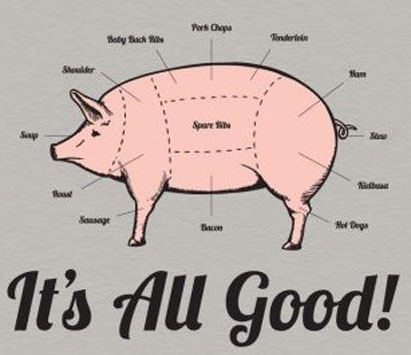
The Mosaic dietary laws were temporary. Just as a Nazirite made a temporary vow for the purpose of sanctification for holy war, so Israel’s purpose as a nation of holy warriors included certain abstinences prescribed by God. Once the war was over, the prohibitions were removed. “Bridal food” (the Feast of Tabernacles) was back on the menu in the first century.
The Nazirite vow was a symbolic form of death and resurrection, of the bridegroom going into the grave (short hair), slaying the serpents, and emerging from the chamber with His bride (long hair), whom He then presented to the Father. [1] The prohibition on the Tree of Knowledge was a temporary one. It began Adam’s holy war, but he broke the vow, failed to rescue the bride and was expelled from the Lord’s table. [2]
Continue reading
11 comments | tags: Communion, Fasting, Food laws, Genesis, Jacob, James Jordan, Leviticus, Nazirite, Robert Farrar Capon, Typology | posted in Biblical Theology, Christian Life, Quotes
Nov
18
2010

Darren Doane’s exciting Genesis Redux project is progressing. And chilling.
The series will be out early next year. Besides being a totally awesome production, a version with an accompanying teaching curriculum will also be available.
Here’s some screen shots: Continue reading
5 comments | tags: Darren Doane, Genesis, James Jordan | posted in Biblical Theology
Nov
9
2010

The Wrong Kind of Blood, the Wrong Kind of Spirit
These six things the LORD hates, Yes, seven are an abomination to Him:
…..A proud look,
……….A lying tongue,
……………Hands that shed innocent blood,
………………..A heart that devises wicked plans,
……………Feet that are swift in running to evil,
……….A false witness who speaks lies,
…..And one who sows discord among brethren. (Proverbs 6: 6-19)
Although Revelation describes two women, there was really only one. Solomon dealt with two prostitutes who lived in the same house. What Revelation does is cut the prostitute in two. At Atonement, Rahab was separated from Jericho; Mary Magdalene was delivered of her seven demons. Peter Leithart writes:
“Mary Magdalene functions in the same way in John’s gospel. She had seven demons (like Israel in Jesus’ parable!), but by the end of the book has become a new Eve, recognising Jesus as the New Adam in the garden of the resurrection. Since she is new Eve, it is entirely appropriate that Jesus call her ‘Woman’.” [1]
Continue reading
1 comment | tags: Covenant Theology, Feasts, James Jordan, Numbers 5, Peter Leithart, Revelation, Solomon, Systematic typology, Warren Gage | posted in Bible Matrix, Biblical Theology, Quotes, The Last Days
Nov
8
2010
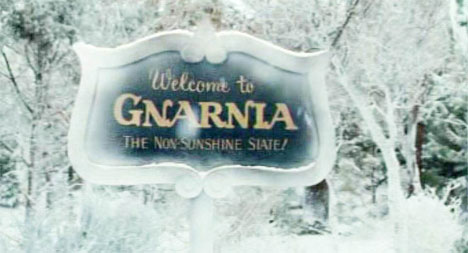
From James Jordan, The Framework Hypothesis: A Gnostic Heresy, Biblical Horizons No. 107
…I submit that the entire Christian faith stands or falls on how Genesis 1 is interpreted, and that the guardians of the Church must take an unequivocal stance on this matter.
The issue is hermeneutics and religion. Since these “contradictions” in Genesis 1 serve to indicate that this passage is not to be taken historically, the only alternative is to take the passage as giving some kind of archetype for creation by God. It is a foundational “myth,” expressing in “human language” matters that cannot be expressed any other way. It is a true myth in that the ideas taught in Genesis 1 are true.
And this is where the shift from true religion to gnosticism comes in. History has been replaced by ideas. Continue reading
3 comments | tags: Add new tag, Exodus, Genesis, Gnosticism, Hermeneutics, James Jordan | posted in Apologetics, Creation, Quotes
Oct
26
2010

“When you read the Bible, be careful of adopting a bunch of mechanical rules to read by… You know, you can go to the Christian bookstore, or the seminary bookstore, and you can get books by popular writers and by professors of theology on how to read the Bible: ‘rules for reading.’ And there is much that is useful and good in some or all of those books. But we must ask ourselves, what other book have you ever read using rules? Do you have a book of rules to read the newspaper by? Or if you want to read a novel by Jane Austen, must you consult a book of interpretive laws? Or a textbook on American history? Or do you just read it? It’s kind of odd that we have covered the Bible up with ‘rules on how to read.’ We don’t read anything else by rules. So what’s going on here? Continue reading
Comments Off | tags: Hermeneutics, James Jordan, Science | posted in Bible Matrix, Biblical Theology, Quotes
Oct
25
2010
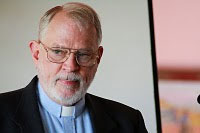
James Jordan Interview
A reader wrote:
After spending about two weeks on Bible Matrix, I’ve found that my greatest challenge has been learning to think differently. Have you written anything on learning how to make the transition from thinking about the Bible as a specimen in a laboratory to thinking about the Bible as a work of art? I sense that to communicate this stuff to the average Joe (and even to take on this mode of thought as my own) it would be helpful to know how to explicitly go about making that transition. Or maybe you see that as part of the problem? This stuff is more caught than taught? Continue reading
Comments Off | tags: James Jordan, Literary Structure, Music | posted in Biblical Theology
Oct
23
2010
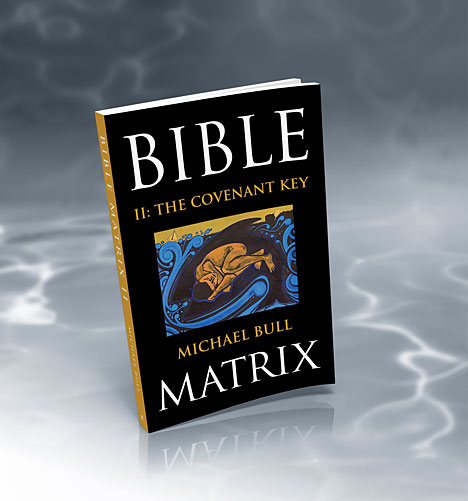
“Let’s face it, even daytime television
is more inspiring than your sermons.”
Ray Sutton’s 5-point Covenant model is crucial when it comes to making sense of the judgments of God, both the blessings and the curses. As he says in his book That You May Prosper, “Everyone talks about the Covenant, but nobody does anything about it.”
When I was writing Totus Christus, I thought it was only natural that the 7-point Creation pattern and the 5-point Covenant pattern could be combined. Transcendence is Light. Testing and Ethics matched. The positive and negative Sanctions were quite obviously the two goats on the Day of Atonement (Ebal and Gerizim). So it was only a matter of figuring out how the 5 of Words becomes a 7 in history. [1] Continue reading
7 comments | tags: Covenant Theology, Eric Rauch, James Jordan, Literary Structure, Preaching, Ray Sutton | posted in Bible Matrix, Biblical Theology
Oct
14
2010
The Killing Field

“…that on you may come all the righteous blood shed on the Land, from the blood of righteous Abel to the blood of Zechariah, son of Berechiah, whom you murdered between the temple and the altar.” Matthew 23:35
“from the blood of Abel to the blood of Zechariah who perished between the altar and the temple. Yes, I say to you, it shall be required of this generation.” Luke 11:51
The Hebrew word for “land” is feminine. [1] The fruitful Bride is pictured in the fruitful field. Both are to be cultivated and cared for under God by Covenant.
When the priesthood was faithful, God promised to make the people, animals and Land fruitful: the Covenant “to,” the input of the Spirit as Head, as Covenant Word made flesh. Deuteronomy 28 gives a long list of ways in which God would make her abundant. Continue reading
1 comment | tags: Abel, Atonement, Cain, Covenant curse, Covenant Theology, Culture, Deuteronomy, Genesis, James Jordan, Judges, Leviticus, Noah, Peter Leithart, Ruth | posted in Biblical Theology, Quotes
Oct
4
2010
Beyond Binary

“In my Father’s house are many mansions…”
There are various covenants in the Bible, just as there are in human life. Covenants are the way God does things.
He calls a representative,
…..delegates His authority,
……….gives the mission,
……………allows time for it
……….to be accomplished,
…..assesses the outcome
and throws a party.
If the outcome is good, the delegate and his mission subjects are invited to the feast. If the outcome is bad, the delegated head and his corrupt body are the meat on the table. And the Holy Ones rejoice over their doom. There is always an outcome, a reckoning, a succession, an “offspring.” Continue reading
Comments Off | tags: Covenant Theology, Doug Wilson, Genesis, James Jordan, Postmillennialism, Tabernacle, Trinity | posted in Bible Matrix, Biblical Theology, Creation, Quotes
Sep
30
2010
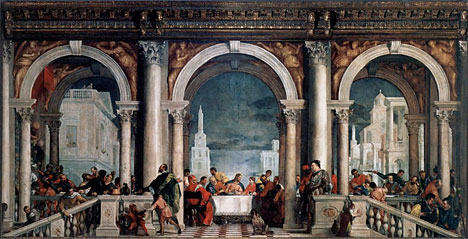
Cooking as Eschatology
But while they still did not believe for joy, and marveled, He said to them, “Have you any food here?” So they gave Him a piece of a broiled fish and some honeycomb. And He took it and ate in their presence.
NOTE: THIS POST HAS BEEN REMIXED AND INCLUDED IN GOD’S KITCHEN.
Thanks to Doug Wilson’s recommendations of it, one of the books I took to hospital was The Supper of the Lamb by Robert Farrar Capon. It is a mouth-watering fusion of cookbook and theology, pushing the idea of multi-disciplinary insights to the outer limit. But then, we moderns don’t have such biblical horizons, do we? We refuse to see the world as the Bible reveals it to us.
Continue reading
1 comment | tags: Daniel, Doug Wilson, Esther, Food laws, James Jordan, Leviticus, Noah, Robert Farrar Capon | posted in Apologetics, Bible Matrix, Biblical Theology, Christian Life, Creation, Quotes, The Restoration Era, Totus Christus



































